How to Ski Powder

Votes:
If you’ve ever watched a skiing video of an unbelievable powder run from a pro-skier, where they make it look like the best and most effortless thing in the world, and wanted to try it for yourself, then this one's for you.
The most important thing to remember before you head off-piste is to stay safe. Avalanches can happen on slopes with a gradient of 30 degrees or more (and in some cases even less than that), so while a slope might look peaceful and inviting, it’s really important to be aware of the risks. So please take an avalanche course!
If you’re a beginner to skiing powder the best place to start is a groomed slope that has just had some snowfall. That way you can practice steering the skis through loose snow without worrying about what’s underneath. You can also try avalanche-controlled runs. These are marked out, so you can ski safely while still getting some powder.
1. Braquage drill
The most important skill in powder skiing is rotating the feet to steer the skis. It might feel like the force for this is coming from the ankle, but it’s actually from your hip socket. To get to grips with this try a braquage drill.
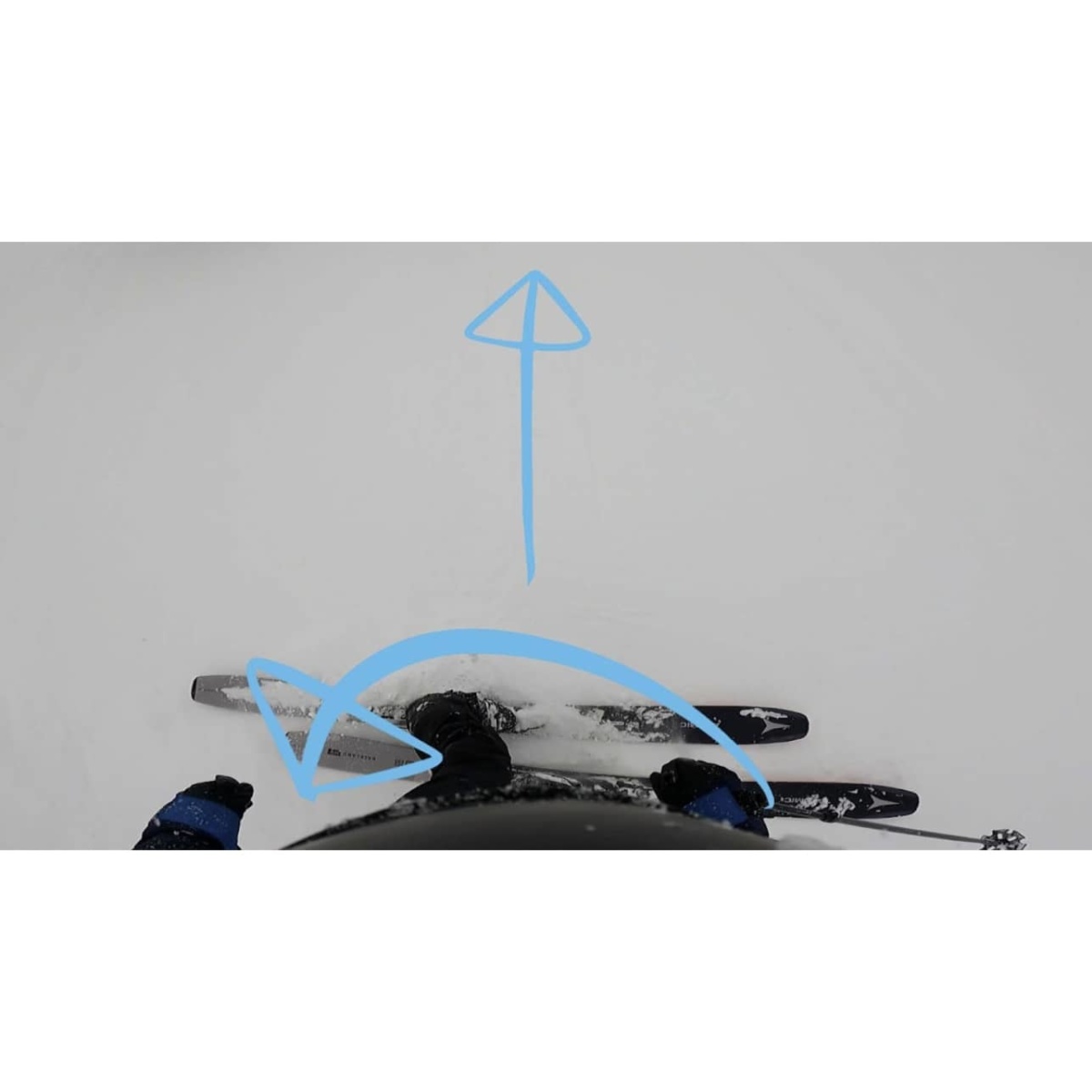
(2:28) Start with your skis pointing across the piste, arms forward and wide and upper body facing down the hill. Then release your edges and twist the skis 180 degrees from one side to the other. This is the basis of powder turns!
2. Ridge Riding
Now we can combine this with skiing in “3D”, so you’re comfortable with your skis moving up and down the ski pack, so try ridge riding. Find a ridge at the side of the slope (there doesn’t need to be powder) and turn across it.

(4:09) As you transition over the ridge bend your knees and let your skis come up out of the snowpack. Then focus on rotating your skis like in the braquage drill.
If you’re going to venture into the backcountry, we’d strongly suggest doing an avalanche safety course. An online course is a good place to start, but it’s important to do one in the mountains too.
3. Powder on the groomer
Our next drill requires some powder, so try to find a groomed piste with some powder snow on top. Remember the skills you’ve learnt already, then try to find the float.
(5:34) If you feel your skis float up on top of the snow in between turns, that’s a big step forward in your powder technique.
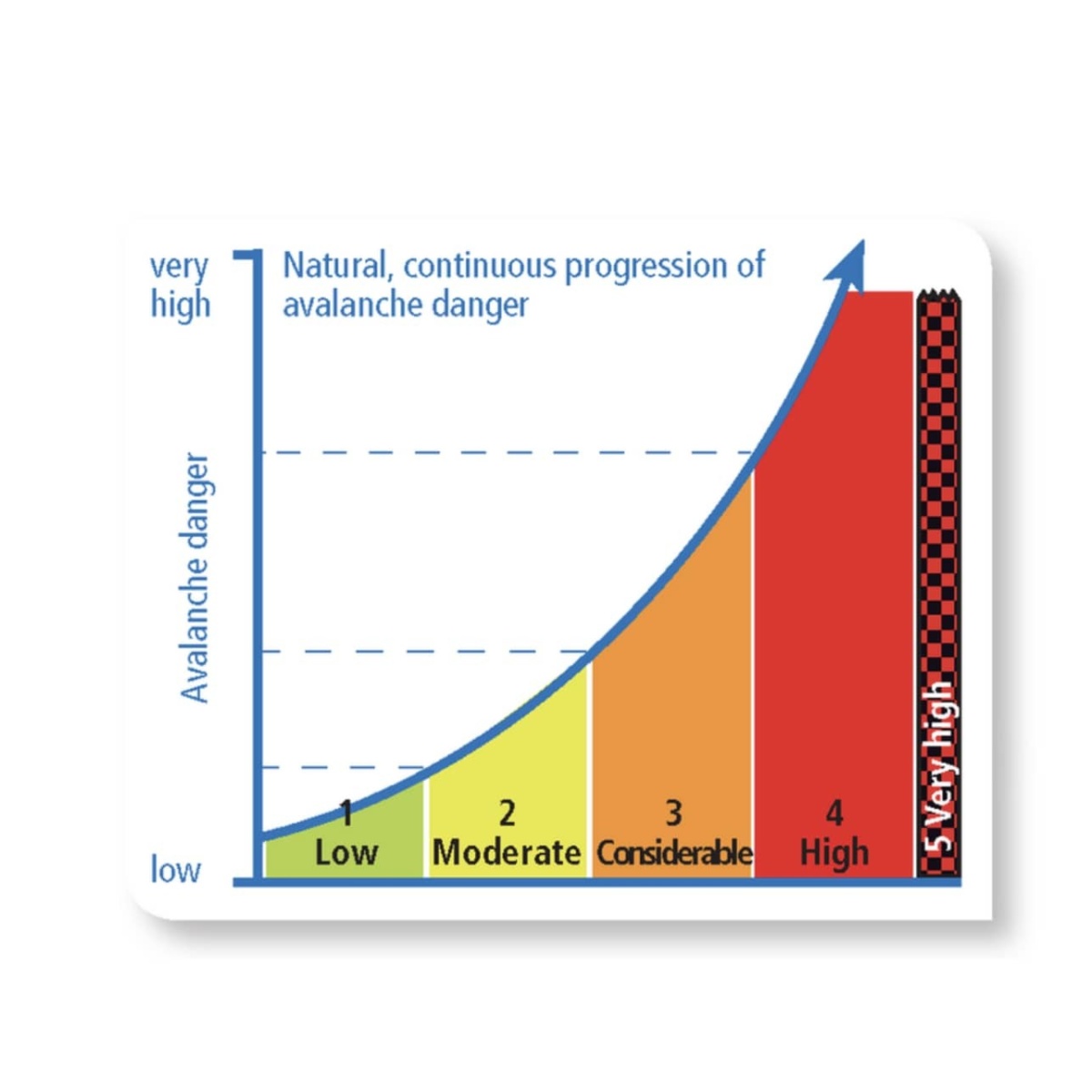
Always check the avalanche bulletin if you’re venturing off-piste. It’s a scale from 1 to 5, but conditions become exponentially more dangerous as the number gets higher. 80% of deaths in the backcountry occur at levels 2 and 3, so it’s really important to be aware which level the resort is at and act accordingly.
4. Pumping Powder
Now we’re going to isolate the feeling of moving up and down the snowpack with a pumping drill. Find some powder and ski straight down trying to get a smooth rhythm of putting pressure on the skis to compress the snow, then popping back up. (7:12)
5. Pump and Turn
Our next drill is pump and steer. Here we want to combine that pumping action with steering the skis. The pumping will help the skis float ontop of the snow in between the turns.
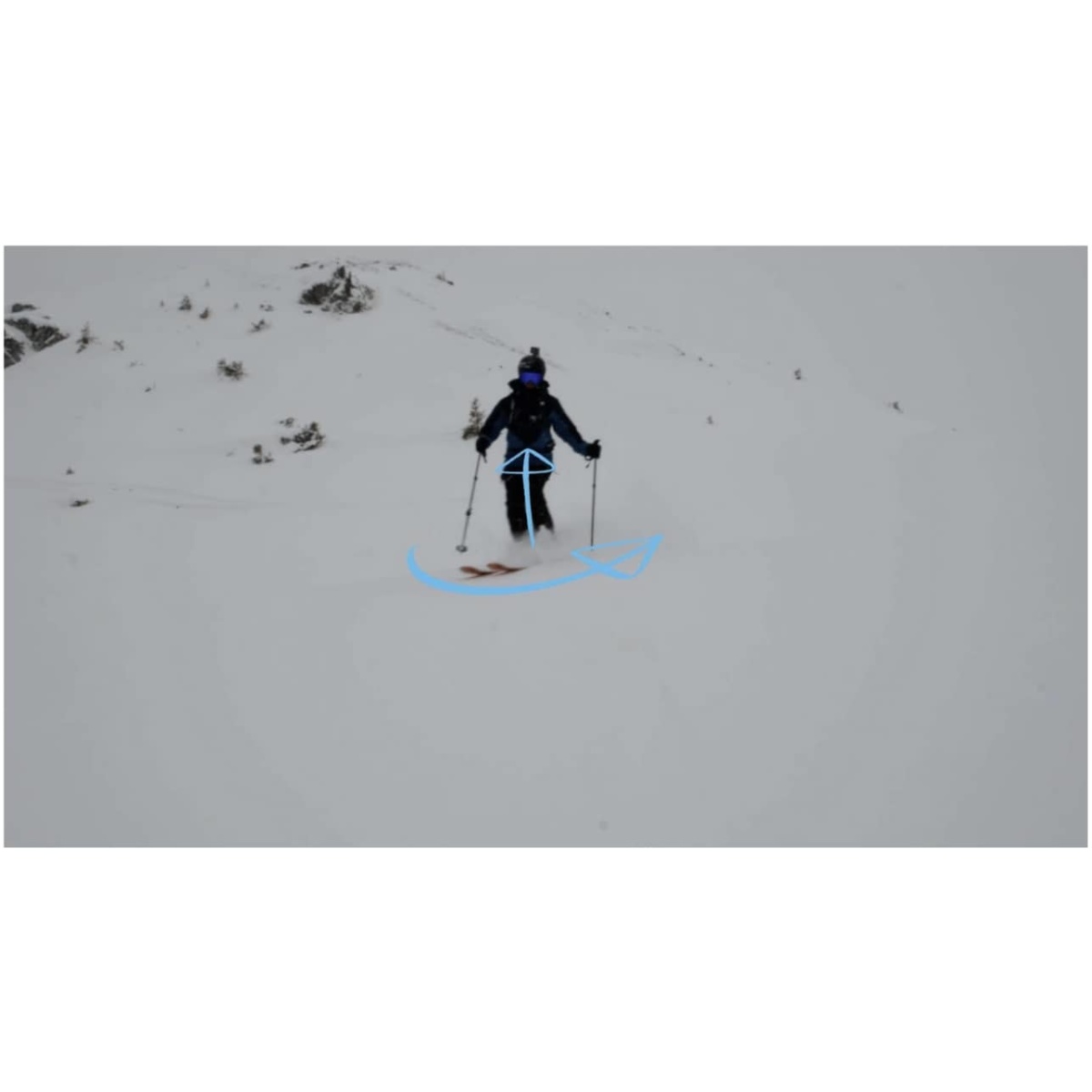
(8:26) Allow the skis to float and turn. Make small gentle turns at first, so you can control your skis, then as you improve, increase their size. You’ll also need to keep some speed to float on top!

6. Equipment
You can start your powder journey on any ski, but as you progress you might want some that are designed for the job. The perfect powder ski has a rocker (long tip which helps the ski float) is wide and has bindings mounted a bit back to allow you to ride on top of the snowpack. (9:29)
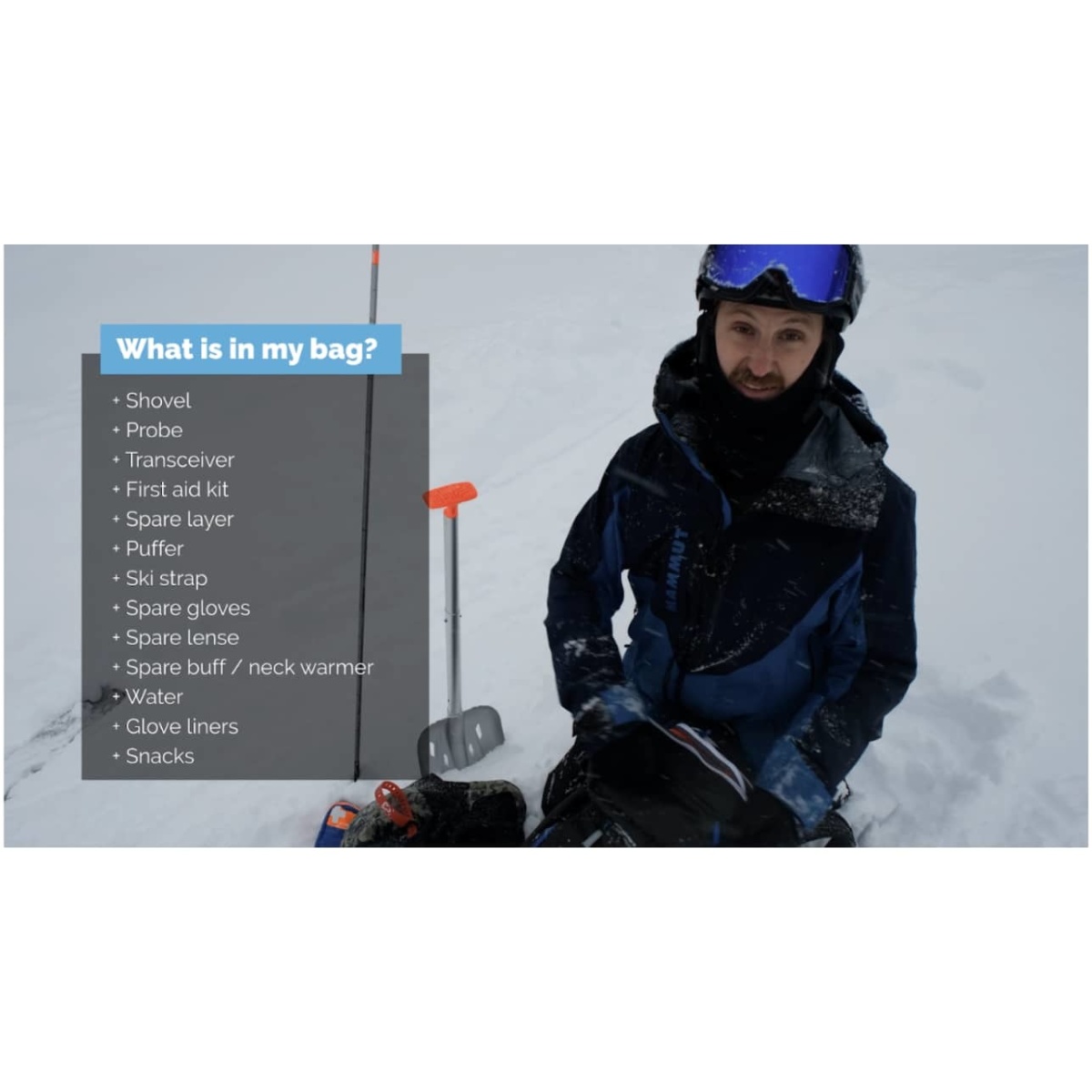
Always wear a rucksack when skiing back-country to carry safety equipment with you. In his, Jens has his shovel and probe. These are used to help locate someone buried in an avalanche and should be with you every time you ski powder.
He also carries a first aid kit, spare clothing including extra layers, gloves, glove liners and a buff, water and snacks and a spare lens and ski strap. (11:07)
7. Monoski
When you’re in powder, imagine you have a monoski. Keep your feet close together, so your skis are almost touching. This will help you to keep even pressure on both skis and make it easier for them to turn together. (11:56)
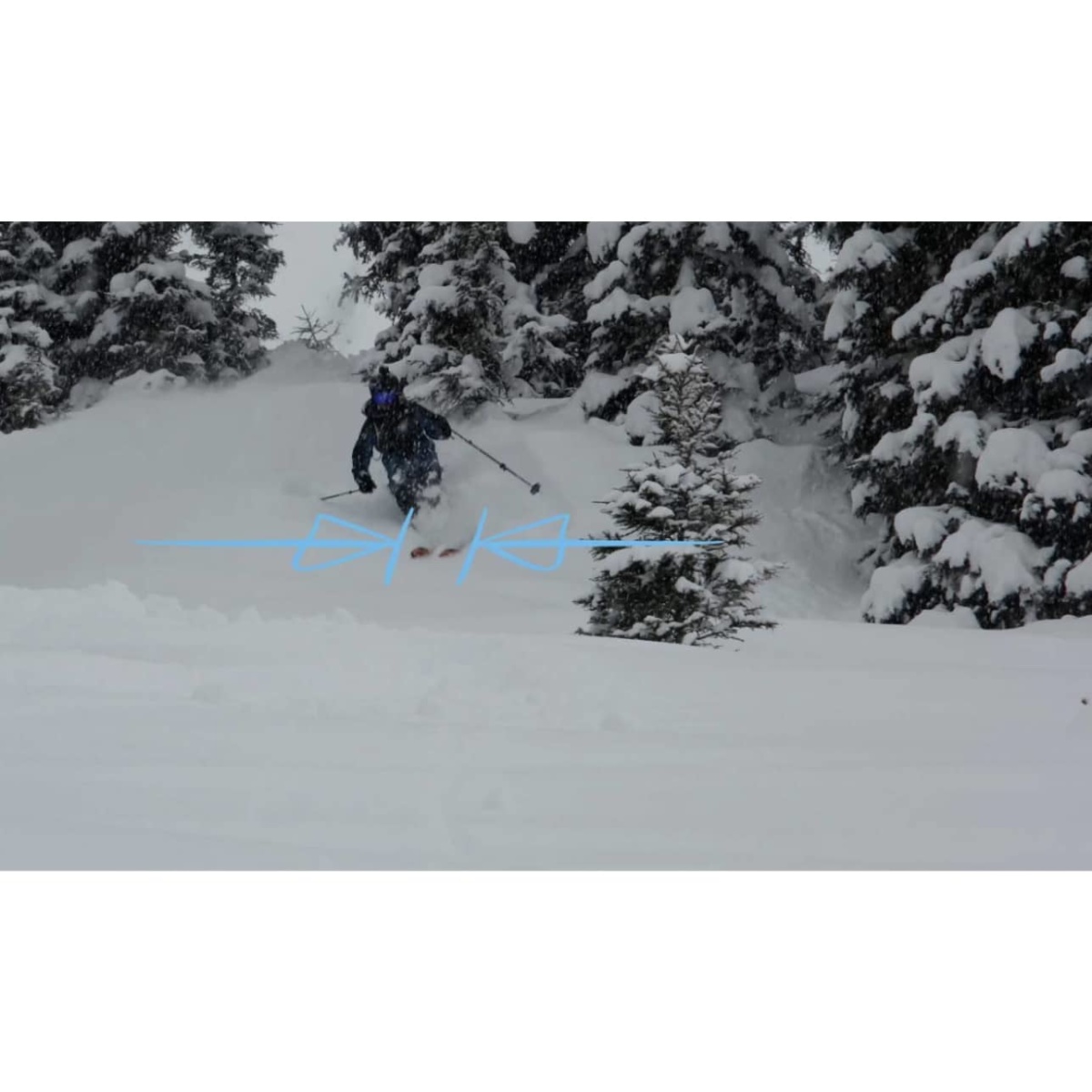
8. Carv Data
Now we’re going to use the Carv insole to compare turns on piste versus powder. The data shows that in both conditions Jens has more pressure on his outside ski, so he doesn’t slip or skid, but the difference between the two ski pressures is much bigger when he’s on the piste.

We can see from the Carv graphs that on a groomed piste, outside ski pressure increases through the turn then drops. The inside ski pressure does the same but with a smaller amount of pressure in percentage. (12:44)

On powder, outside ski pressure is similar to on piste, but much higher pressure is put on the inside ski, so on this gentle pitch it was 52% outside ski pressure. If the terrain was steeper more pressure would be put on the outside.. (13:03)
9. Speed between turns
As your confidence increases, so should your speed. This will make the snow feel firmer, and you should get more float. To help maintain speed, aim for banana-shaped turns rather than C-shaped. (13:51)
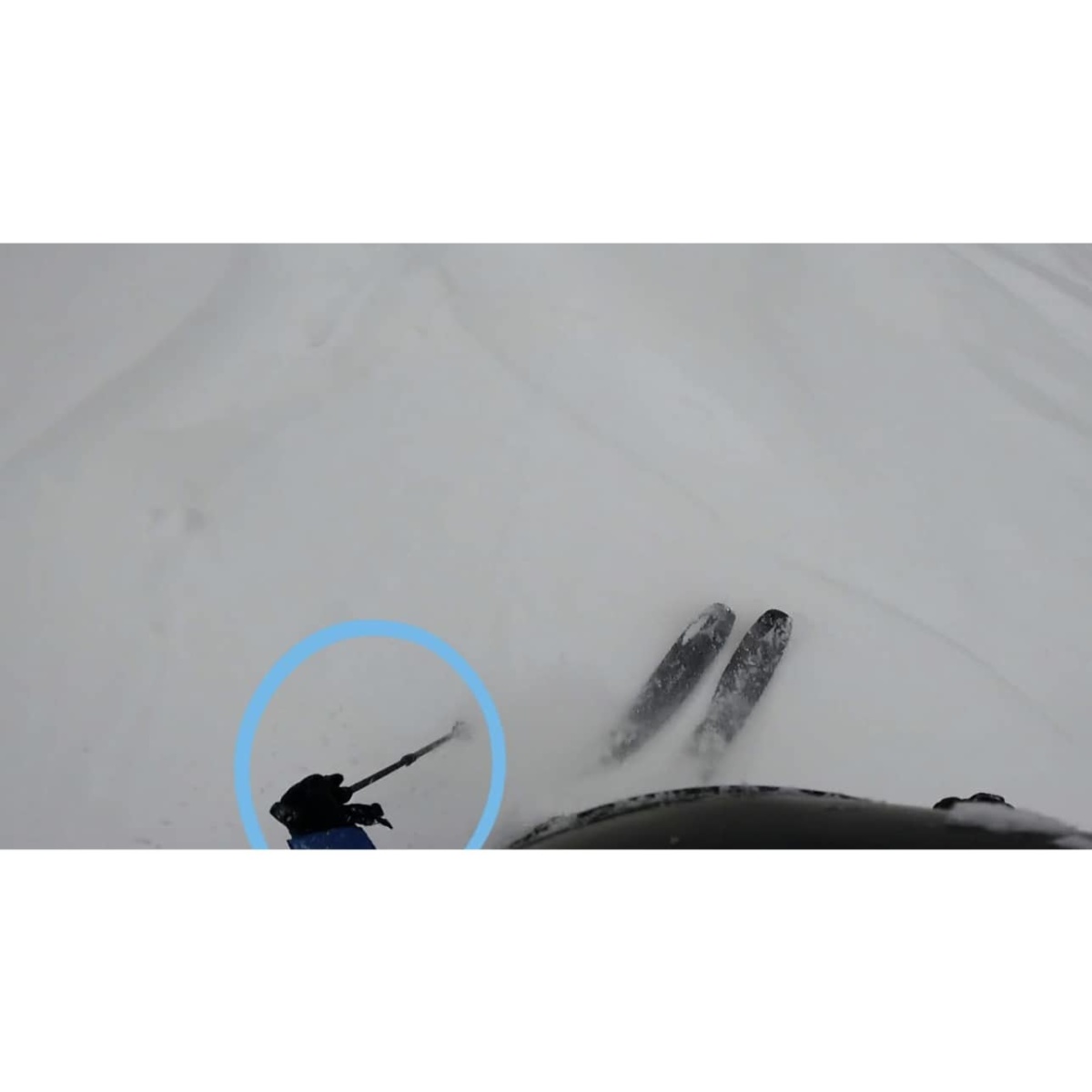
10. Pole plant
Our final drill is the pole plant - nailing this will really bring your powder skiing together. Good pole plants help you to get the rhythm in your turns, making the pumping action easier, and keeping your upper body facing down the hill. Plant your pole down and forwards then turn around it. (14:20)
If you want to invest in your skiing and see big improvements, then why not join a Stomp It Camp. You can choose from ski technique, free-ride or free-style and our expert instructors will help bring you up to the next level all while tracking your improvement with carv.
Sign up now and use the discount code CARV to save €150CHF.

Written by: Stomp It Tutorials
Ski technique and freestyle camps
Stomp It Tutorials lead in-person technique camps in Zermatt and Laax, Switzerland, where they combine Carv's objective analysis with in-person coaching to push your skiing technique to the next level.